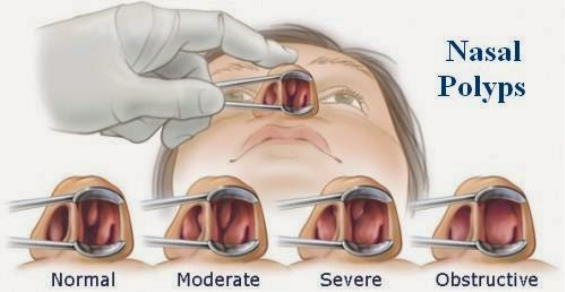Cause of Nasal polyps is Unknown ( Must Read )
The frequency of nasal polyps is uncertain. Only 0.5% of individuals with atopic symptoms manifest nasal polyposis, and most patients with diffuse nasal polyposis do not demonstrate an immunoglobulin E (IgE)–mediated type 1 hypersensitivity reaction. Patients with cystic fibrosis have a higher prevalence of nasal polyposis (up to 40%). In a study of 10,336 US adults, Palmer et al found that 11.5% of these individuals reported symptoms of chronic rhinosinusitis, with about 10% of this subgroup indicating that they had received a previous diagnosis of nasal polyps.
Polyp development within nasal and sinus regions implicates an IgE-type hypersensitivity and an immunologic or possibly inflammatory basis for such formation.
The exact etiology of polyp formation is unknown. Research is demonstrating an eosinophil-mediated mechanism with damage to the mucosa by major basic protein, but the complicated interplay of secondary messengers and chemical mediators is not clear.
A retrospective case-control study by De Corso et al found that in a comparison of three sets of patients—those with persistent eosinophilic nonallergic sinonasal inflammation (n = 84), patients with neutrophilic inflammation (n = 106), and, as controls, patients with nonallergic noninfectious vasomotor rhinitis in whom nasal cytology revealed no evidence of inflammation (n = 105)—those in the eosinophilic group were most likely to develop nasal polyps. Specifically, 34.5% of the eosinophilic group developed nasal polyps, compared with 16.0% and 4.8% in the neutrophilic and control groups, respectively.
Nasal polyposis in association with cystic fibrosis, sinobronchial syndrome, aspirin sensitivity, and Samter triad (asthma, aspirin allergy, nasal polyposis) indicates manifestation of nasal mucosal damage by many different possible disease processes.
Read more : How to Treat Nasal Polyps Naturally at Home ?




Nhận xét
Đăng nhận xét